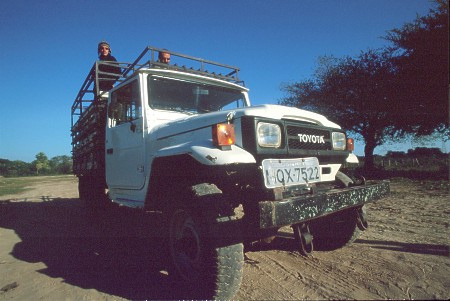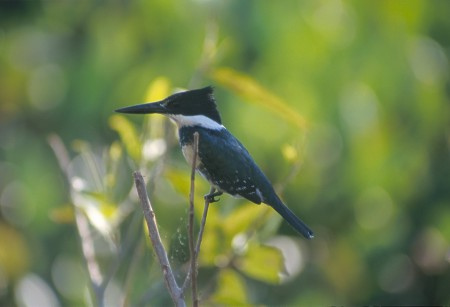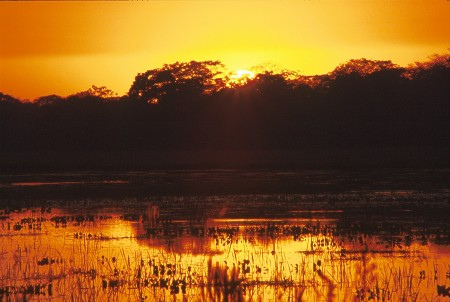People and Culture
The culture of the Pantanal is based predominantly around cattle ranching. Despite some inroads by mining and tourism, cattle ranching still comprises around 80% of the economy.
The Pantanal and Brazilian central-west regions are sometimes referred to as Brazil's Wild West. They've long had a strong pioneer feel - far removed from the Portuguese colonial influence of the coast. Throughout the colonial period and the early days of the Brazilian Empire, the settlements of Mato Grosso and Mato Grosso do Sul (then combined into a single state) were semi-independent. They only had themselves to rely on since they were months away from government and other major settlements along the Atlantic coast. As with the American West, the settlers initially needed to protect themselves against the local indians - although the threat later shifted to protecting the frontiers and settlements against the Spanish Empire and Paraguayans.
The Pantanal's annual flood cycle meant the land was initially unsuitable for large-scale development or plantations. However, the rich grasslands were suited to cattle - leading to the establishment of cattle ranches from the 18th century onwards. This cattle economy soon supplanted that of the gold mines, as the gold deposits found near Cuiabá were less than originally expected, and soon ran out. The extraction of natural products and animal skins also contributed to the region's early economic development.
The culture of the Pantanal is a product of this environment. The region's people are hardy and resourceful - adapting to the changing seasons and the aquatic landscape of the wet season.
Multimedia Links
Cowboy Culture
Today's culture is steeped in its rural traditions. The name Pantaneiro (meaning Pantanal resident) is synonymous with the cowboys who work on the local cattle ranches - and the major calendar event for most towns is still their annual rodeio and agricultural show. The popularity of the sport in rural Brazil is illustrated by the fact that Brazilians now dominate in international competitions such as Professional Bull Riders. You'll also also find many local shops offering other vestiges of the traditional cowboy culture such as hats, boots, cattle horn trumpets, maté (tereré) drinking cups, and leather goods.
One big element of this cowboy culture is the region's sertanejo music (see the music link at the bottom of this page).
Fishing
The Pantanal is a Mecca for Brazil's sports fishermen. As such, you'll find many barco-hotels and fishing related services, all eager to take you to the best spots. Besides the peace and relaxation (and occasional excitement) of fishing, this is also a great opportunity to see wildlife such as jacaré, capybara, birds, and (if you're lucky) even Jaguar along the remote riverbanks. Fishing culture is reflected in the local food, with Caldo de Piranha, Peixe Urucum, and fried Pintado catfish. Many Pantanal towns have their annual fishing festivals. However, note that fishing is prohibited during the spawning season (Nov-Feb), which is locally known as piracema.
Other surprises
Who would have guessed that in this wildlife mecca, you can also experience Carnaval (in Corumbá), re-enactments of medieval battles between Christians and Moors (in Poconé), and some of the best preserved African dances and rituals (in Vila Bela da Santíssima Trinidade).










Banner: Actor Eriberto Leão prepares while filming scenes for the final of the novela Paraíso, set in the Pantanal (Edson Rodrigues/Secom-MT).
Footer images: Bandeirante, Sunset, and Kingfisher (Andrew Mercer)
Pantanal Escapes